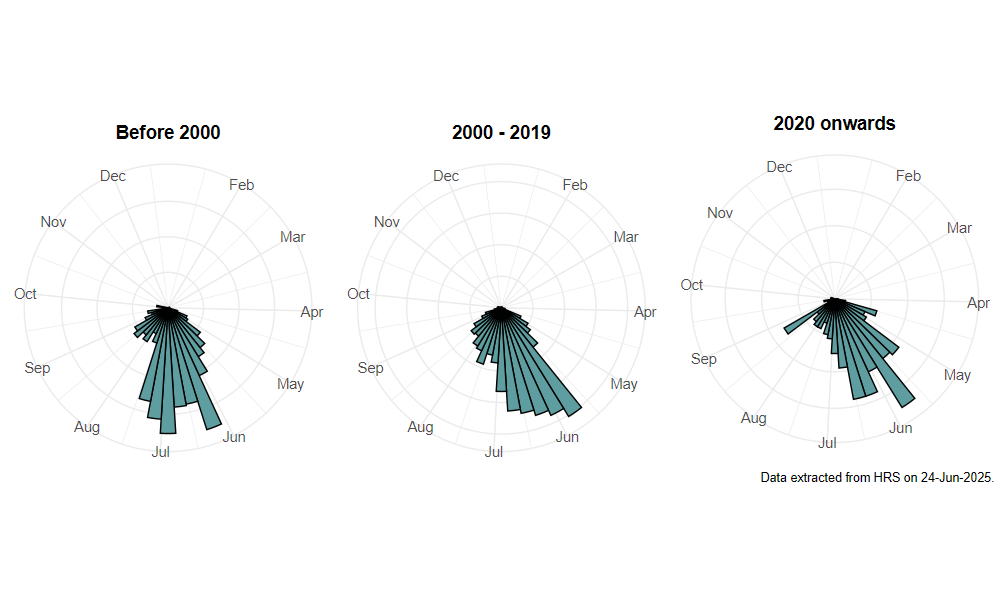Sphegina clunipes (Fallén, 1816)
Identification
Identification difficulty = 3. ![]()
![]() according to Ball & Morris, 20241
according to Ball & Morris, 20241
Biology
The larva is found in sap-runs and other accumulations of decaying sap under bark or in tree holes, usually in damp shaded places. It is found in lush, damp undergrowth in deciduous woodland, including carr woodland, wooded river banks and fenland scrub. In southern England, adults prefer shady situations and they are rarely found beyond dappled shade. However, in northern areas, especially Scotland, it can be very abundant in open situations, often visiting flowers such as Tormentil Potentilla erecta and Hemlock Water Dropwort Oenanthe croccata.
Flight period
The following plots show the number of unique records per week excluding those reported to be of immature stages.

Distribution
This is the most frequent member of the genus. It is mainly found in woodland but is also found in more open situations around the edges of conifer forests in northern Britain where it can be very abundant. It appears to favour wetter places and is consequently commoner in western and northern areas. Northern specimens are often more colourful.

Trends
The following plots show the Frescalo TFactor vs year and a map of the rescaled frequency (all records) for the species.
-
Ball, S., & Morris, R. (2024). Hoverflies of Britain and Ireland. WILDGuides (3rd ed.). Oxford: Princeton University Press. ↩